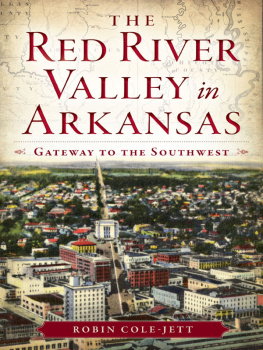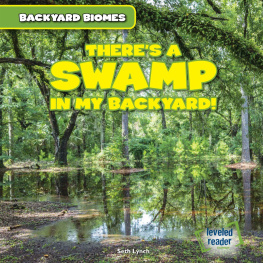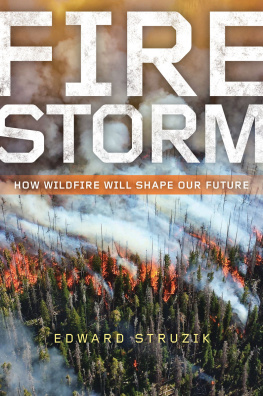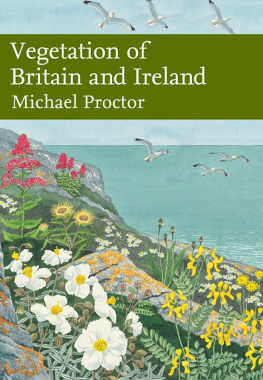About Island Press
Since 1984, the nonprofit organization Island Press has been stimulating, shaping, and communicating ideas that are essential for solving environmental problems worldwide. With more than 1,000 titles in print and some 30 new releases each year, we are the nations leading publisher on environmental issues. We identify innovative thinkers and emerging trends in the environmental field. We work with world-renowned experts and authors to develop cross-disciplinary solutions to environmental challenges.
Island Press designs and executes educational campaigns, in conjunction with our authors, to communicate their critical messages in print, in person, and online using the latest technologies, innovative programs, and the media. Our goal is to reach targeted audiencesscientists, policy makers, environmental advocates, urban planners, the media, and concerned citizenswith information that can be used to create the framework for long-term ecological health and human well-being.
Island Press gratefully acknowledges major support from The Bobolink Foundation, Caldera Foundation, The Curtis and Edith Munson Foundation, The Forrest C. and Frances H. Lattner Foundation, The JPB Foundation, The Kresge Foundation, The Summit Charitable Foundation, Inc., and many other generous organizations and individuals.
Generous support for this publication was provided by Deborah Wiley.
The opinions expressed in this book are those of the author(s) and do not necessarily reflect the views of our supporters.
2021 Edward Struzik
All rights reserved under International and Pan-American Copyright Conventions. No part of this book may be reproduced in any form or by any means without permission in writing from the publisher: Island Press, 2000 M Street, NW, Suite 480-B, Washington, DC 20036-3319.
Library of Congress Control Number: 2021936542
All Island Press books are printed on environmentally responsible materials.
Cover images courtesy of Shutterstock: owl: vector_ann; berries: Cat_arch_angel; globeflower: Elizaveta Melentyeva; orchid: Alina Briazgunova; moth (top): Maryna S.; moth (bottom): Maria Stezhko; beaver: Kovaleva Galina; background: David M. Schrader
Manufactured in the United States of America
10 9 8 7 6 5 4 3 2 1
Keywords: Alakai Swamp, Albemarle Peninsula, Arctic, Ash Meadows, Aweme borer, beaver, bog, botany, canal, Central Park, climate change, colonists, cypress, Death Valley, grizzly bear, Everglades, fen, flooding, French drain, Georgian Bay, Great Dismal Swamp, Hudson Bay Lowlands, hydrology, invasive species, maroon, marsh, miasma, mining, moss, nuclear bomb, Olmsted, orchids, peatland, permafrost, pocosin, polar bear, Powhatan, pupfish, rattlesnake, red wolf, restoration, sphagnum, Strathcona Fiord, Tolland Man, tundra, US Fish and Wildlife Service, water retention, wildfire
ISBN-13: 978-1-64283-081-1 (electronic)
Preface
And what sort of a river was it? Was it like an Irish stream, winding through the brown bogs, where the wild ducks squatter up from among the white water-lilies, and the curlews flit to and fro, crying Tullie-wheep, mind your sheep; and Dennis tells you strange stories of the Peishtamore, the great bogy-snake which lies in the black peat pools, among the old pine-stems, and puts his head out at night to snap at the cattle as they come down to drink?
Charles Kinsley, The Water Babies
The initial idea for a book on peatlands came to me incrementally during several trips I made to Banks Island, one of 36,563 islands in the Canadian Arctic Archipelago. The first, in 1991, was a month-long paddle down the Thomsen River, which flows gently north into McClure Strait, part of the Northwest Passage that stays frozen for most of the year.
So much of what my wife Julia and I saw on that journey was a composite of contradistinctions that confused and conspired against everything one assumes about the polar world: the familiar blizzard that greeted us on the first day, and the not-so-familiar thunderstorm that arrived with a bang close to the end; barren, rock-hard tundra lying next to butter-soft, spongey peat that gave rise to glorious clumps of mosses, matchstick-sized saxifrage, and pretty white avens; a stark, polar desert river fed by tea-colored streams flowing out of verdant cotton grass meadows where sandhill cranes nest and more than 80,000 muskoxen roam. (Two-thirds of all the muskoxen in the world resided on Banks at the time of our trip.)
The abundance of life on this landscape was baffling in its ability to transcend expectations and simple explanations. Inexplicably, there are six fish species in the Thomsen, as well as 97 mosses and 83 specimens Why, I wondered, while participating in a scientific survey of raptors many years after that canoe trip, do peregrine falcons, gyrfalcons, and rough-legged hawks come to nest here in such relatively large numbers? Is it for the same reason that a half-million snow geese make the trip from California, New Mexico, and Mexico to nest on the west side of the island where I tried and failed to be the first to kayak the complete course of the Bernard River? And how did the wolves on Banks Island evolve to become genetically distinct from other wolves in the Arctic, as Lindsey Carmichael, a former writing student of mine, reported in her award-winning PhD thesis on these ghostly white animals that visited at night, sometimes with a bark, other times with phantom notice of pee sprayed on the side of tent? We were not being welcomed.
Part of the answer, I learned on another, more recent, month-long trip to the island, has to do with deglaciation and flooding, which are key to the accumulation of peat in most parts of the world. Geologists once thought that Banks Island was spared the deep scarring of the last glacial advancea refugia of sorts that never went into a centuries-long deep freeze where piles upon piles of snow built up and compressed to form thick sheets of ice. But John England, the scientist I spent time with on Banks, is convinced that the island was thinly covered in ice toward the end of the last Ice Age.
When that thin veil of ice pulled back and slowly wasted away, it left behind hundreds of tundra ponds, polygons, and stream beds where water flowed and where swaths of mosses, sedges, dwarf willow, and other Arctic plants grew and slowly decayed into thick layers of peat. Decomposition could not keep up with the living things that grew so well in a part of the Arctic that is warmed, at times, by a massive wind-driven gyre that regulates climate and sea ice formation.
There are other places in the archipelago where there are verdant peatland meadows. The Kuujjua and Nanook river valleys on Victoria Island (southeast of Banks), which I have canoed through; Sverdrup Pass, the Fosheim Peninsula, and Strathcona Fiord on Ellesmere Island in the most northerly parts of the Arctic are others I have hiked and excavated with paleontologists. The approach to Bylot Island by sailboat in the eastern Arctic was memorable for so many geese nestingamong predatory Arctic foxes and red foxes that recently arrived from the mainland. But one has to go much farther south to see an expanse of peat as vast as this in the High Arctic and as many birds, plants, and animals as there are here.
As much as I thought of writing a book on peat following my explorations of Banks Island, there was much more to be learned before I got up the gumption to begin putting pen to paper. These peaty landscapes in the circumpolar Arctic, the boreal forest, the Atlantic cedar swamps, mountains, and deserts, and the tropical and temperate forest of the world do not lend themselves to more conventional descriptions quite like alpenglow lighting up mountain vistas, the ripple and splashes of water echoing through grand canyons, lightning flickering across big prairie skies, and cacti flowering along ephemeral streams that wind their way through the sunburnt cliffs of deserts.








